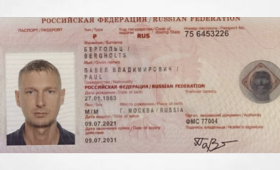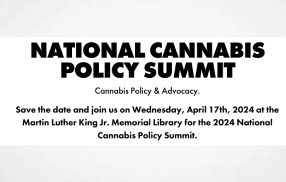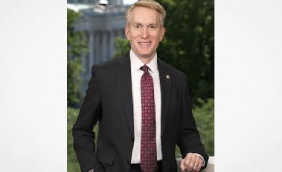Ganjapreneur report..
Green Party presidential candidates Howie Hawkins and Angela Walker are calling for the decriminalization of all drugs as part of their proposed police reforms.
The leading candidates for the Green Party’s presidential ticket Howie Hawkins and Angela Walker are calling for “radical changes” to policing, including decriminalization of all drugs. The plan also includes community control of police and using federal funds in police budgets specifically to “pay for the services and economic development that working-class communities of color need.”
Full story at
THE FULL STATEMENT – POLICY OUTLINE
by Howie Hawkins and Angela Walker
The new movement against police brutality and racism, spurred video-captured police murder of George Floyd, is now in its fourth week on the streets. Hundreds of thousands of people in every state and more than 2000 cities and towns have participated in this movement. The multiracial composition of the movement is unprecedented and a hopeful harbinger.
Public opinion polls show that the majority of Americans, particularly younger people, have come to the conclusion that racism and police brutality are major problems. While people of color have long held these views, the shift in white public opinion in recent weeks is dramatic. It remains an open question whether this shift will be sustained in order to provide the political support for making fundamental changes to end police brutality and systemic racism.
People can now see that the policing system we have now undermines public safety, particularly for Black people. We must fundamentally rethink how we make communities safe. In order to stop the long-recurring cycle of police brutality toward Black people instigating community uprisings, we must create alternatives to policing for many problems. We must restructure the power relationship between communities and their police. We must examine questions like whether a trained counselor or a conflict resolution specialist would be more effective than a police officer in many situations, whether a mental health worker would be more effective at handling a mental health crisis. And, we must ask if our economy provided for the material needs of people for employment, income, food, housing, healthcare, and education, could we radically reduce the scope and scale of problems police need to respond to.
REFORMING POLICE PRACTICES AND ACCOUNTABILITY
A long menu of policing reforms has been thrust into public debate and legislative consideration by the nationwide uprising against police brutality and racism. Many of the proposed reforms of policing practices at the state, local, and federal levels are good policies.
House Democrats have introduced The Justice in Policing Act of 2020, which includes the following measures:
- revise the “qualified immunity,” which has protected police from liability for excessive use of force
- require police to carry personal liability insurance
- curb the transfer of military equipment to state and local law enforcement agencies,
- mandate data collection of police misconduct
- establish a federal registry of offenders
- mandate racial bias training
- outlaw choke holds
- outlaw no-knock warrants
- make lynching a federal crime, legislation that has been pending in Congress since 1882.
The movement is making these demands and others on local and state governments, with some of these measures already adopted in a few cities and New York state. Additional demands include:
- release police disciplinary records
- mandate de-escalation tactics
- strengthen use-of-force policies
- require a warning before shooting
- create a duty to intervene against excessive force by other officers
- ban shooting at moving vehicles
- emphasize community policing over reactive policing
- establish residency requirements for police
- establish police review boards, or strengthen their investigative and disciplinary powers
- re-negotiate police union contracts to remove provisions that give officers special protection from investigation and discipline of misconduct
Even President Trump and Republican Senators now feel compelled by the movement to propose modest reforms to policing practices.
Beyond reforming police practices and accountability, the movement is demanding to “Defund the Police.” Defunding means scaling back what police do and transferring the savings into social services, schools, housing, and community economic development. Defunding means removing police from dealing with many social problems such as homelessness, drug use, sex work, mental health crises, domestic disputes, and school discipline that are better addressed by other trained first responders, including social workers, EMT’s, doctors, child protective services, therapists, and legal aid lawyers.
POLICE REFORM AND DEFUNDING ARE NOT ENOUGH
Reforming police practices and reallocating portions of police budgets to the provision of social services are not enough. These reforms do not shift the power to control policing to the people the police are supposed to protect and serve. These reforms do not provide enough resources to resolve the social problems that police are now sent in to contain because the system has criminalized problems like poverty, homelessness, mental health issues, and drug use. These reforms do not decriminalize personal drug use and possession, the largest single category of arrests and imprisonment in the US criminal justice system.
If we are going to truly create a public safety system that serves and protects the people, we must add three critical demands to our program:
1. Community Control of the Police
Police brutality will not stop as long as the police can continue to police themselves and brutalize people with impunity. We need Community Control of the Police to make the police work for the people and be held accountable for misconduct. Community control means police commissions that are publicly elected or randomly selected like juries with the power to hire and fire the police chief, to independently investigate and discipline police misconduct, to formulate and oversee police practices and budgets, and to negotiate police union contracts. Community control shifts the power over policing to the people and away from the police and the power structure that created the abusive policing system we now have.
2. Federal Social Investments to End Poverty and Economic Despair
Police budgets do not have enough money with defunding reallocations to pay for the services and economic development that working-class communities of color need. Sending in cops instead of social services and economic resources has been at the center of the public austerity program of the power structure. As part of reimagining public safety, it is time to fight crime by fighting poverty instead of sending in the police for every social problem. That will require a multi-year, multi-trillion federal investment in community-controlled housing, schools, social services, and businesses in the communities of color that have been impoverished by generations of discrimination by racists who exploit these communities.
3. Decriminalize Drugs
Ending the war on drugs will take the single biggest bite out of police budgets. Drug law offenses account for 16% of all arrests and are the single biggest category of arrests. Drug offenses account for about 1 in 5 incarcerated people, including 46% of federal prisoners. Drug abuse is a health and social problem, not a criminal problem. Instead of a criminal offense, we must make drug use and possession a violation that refers drug users to medical and social services
We cannot let our movement be pacified by reforms that only tinker with policing practices and provide only token social investments. We need a complete redesign of the nation’s entire approach to policing. Now is the time to overhaul the whole system of public safety by shifting who has the power over it, allocating sufficient resources to address social problems, and decriminalizing drug use and other behaviors for which people need help instead of prison.
THE PROBLEMS WITH US POLICING
Police have killed about 1000 people each year for the last five years according to the Washington Post, disproportionately Black, Latinx, and Indigenous people. There have been few prosecutions and even fewer convictions of police, leading to a lack of accountability and a culture of impunity.
A number of those deaths have been captured on video and have led to local and national protests. The response to protests against police violence was more violence by militarized police from the start of the protests. The Military Times reported more than 17,000 National Guard troops were activated in 23 states and Washington, DC by the end of the first week of protests. The police violence continued against protesters when, a week into the protests, Trump told governors to “dominate” the streets to end the demonstrations and cleared protesters out of Lafayette Square near the White House for his own law-n-order photo op. These images of police violence and repression are seared into the minds of many Americans, forcing people to face the reality that policing must be transformed. This adversarial militarized conflict between government and the people is unacceptable.
Police violence is not new. Police have been used throughout US history to enforce inequalities and injustices from their roots in militias for Indian removal and runaway slave patrols, to enforcing Jim Crow segregation, breaking strikes, and suppressing nonviolent demonstrations for peace, justice, and the environment.
For decades, working class urban neighborhoods, especially communities of color, have suffered from a policy of cutting public services and investments, which in turn discouraged private investment. The Kerner Commission, created after the 1960s urban uprisings precipitated by racial discrimination and segregation, usually triggered by a incident of police brutality, warned in 1968 that “What white Americans have never fully understood but what the Negro can never forget—is that white society is deeply implicated in the ghetto. White institutions created it, white institutions maintain it, and white society condones it.” Central among those institutions are police departments, which have become far more militarized and tasked with enforcing the war on drugs that exploded the US prison system into the largest in the history of the world in the 54 years since the Kerner Commission Report.
Donald Trump has long been transparently racist, from discriminating against Black tenants in the 1970s to his birther conspiracy mongering toward Barack Obama and his vicious demonization of Mexicans, Latinos generally, Arabs, Muslims, and immigrants in his 2016 campaign announcement. He has sought to rule by dividing people against each other. His response to nonviolent protests was to threaten to use the military to suppress people exercising their constitutional rights. Thankfully, Trump’s move was rightfully rejected by current and former military leaders and the governors of the states. His law-and-order sloganeering harkens back to racist “southern strategy” of segregationists like George Wallace and Barry Goldwater who for political gain sought to mobilize a white backlash against Black civil rights and economic advancement. Trump’s political playbook is always mobilizing white fear and he is attempting to do that again to defeat the multi-racial national movement against police violence and racism.
JOE BIDEN’S POLICE STATE
Trump alone cannot be blamed for the crisis in US policing and persistent racism. Joe Biden and the neoliberal hawks that have run the Democratic Party for the last 50 years have played a central role in creating the mass-incarceration state. Biden and the mainstream of the Democratic Party were cheerleaders when Nixon declared the “war on drugs” as racist dog-whistle politics. The most rapid expansion of the carceral state occurred under the Clinton administration after the passage of the 1994 Crime Control Act authored by then-Senator Joe Biden. The law added 100,000 police officers with $30 billion in funding from the federal government. It created a host of new crimes, longer mandatory sentencing, $9.7 billion to build more prisons, and new death penalty offenses. States qualified for prison grants if they enforced mandatory sentencing of 85% of a person’s prison sentence, leading to 27 states qualifying for prison grants.
As chair of the Senate Judiciary Committee, Biden worked closely with Tom Scotto, the president of the National Association of Police Organizations. The Washington Post reports Biden saying about the police association, “You guys sat at that conference table of mine for a six-month period, and you wrote the bill.” In a column Biden wrote in 1992 where he described his close alliance with police since 1972, he said that the answer to crime is: “It’s simple—more police on the streets.” Just before George Floyd was killed, Biden was unrepentant about his 1994 crime bill, telling Charlamagne tha God that he still supports it.
Since the 1994 crime bill the federal government has provided $14 billion under its provisions for local police. Attorney General Barr recently announced the awarding of $400 million more in fiscal year 2020. Additional funds are provided by the Justice Department, Homeland Security, and the Department of Agriculture for small towns. The Pentagon has provided $7 billion worth of military equipment to local police since the late 1990s under the 1033 program.
Local governments dedicate large portions of their funds to police. Criminologist Alex Vitale highlights some examples, writing, “New York City spends more on policing than it does on the Departments of Health, Homeless Services, Housing Preservation and Development, and Youth and Community Development combined . . .Oakland PD receives nearly half of the city’s discretionary spending ($264 million out of $592 million), dwarfing every other expenditure, including human services, parks and recreation, and transportation combined. A whopping 39 percent of Chicago’s 2017 budget went to police, and still the department got even more money, peaking in 2020 with a 7 percent increase to nearly $1.8 billion.” Minneapolis spends a huge amount of its budget on policing and, when combined with spending on jails, it is over half of the municipal budget.
But does this make communities safer? Only a small portion of police time and resources are spent on violent and property crimes. A Vera Institute for Justice analysis of FBI crime statistics and national surveys found that violent crimes make up only 4.8 percent of arrests and property offenses only 13 percent of arrests. The FBI reports that 82.7 percent of arrests are for nonviolent offenses like loitering, fare evasion, theft, and drug possession. Nearly 80 percent of violent and property crimes go unsolved. Only 21.7 percent of these crimes are cleared with an arrest. 60 percent of violent and property crime victims do not even report them to the police, which indicates a high level of distrust and contempt for the competence of police departments in solving serious crimes.
These arrest statistics reflect how police have become the power structure’s tool to deal with social ills that they are not equipped to handle. This includes problems like addiction, mental illness, and homelessness. This police state approach is how the power structure responds to the social misery that 50 years of public austerity have created. The political leadership of both major parties, both sponsored by the moneyed elites, refuses to address these social ills with public goods and services. Instead they rely on police repression, widespread arrests, and mass incarceration to contain the problems of racial discrimination, economic exploitation, inadequate public health, and insufficient social services.
CREATING REAL PUBLIC SAFETY
Many problems for which police are used could be better addressed by spending on social services and reconsidering what should be considered crimes. Portugal has found drug decriminalization has not increased drug use and led to reduction of police spending and crime. Switzerland found tremendous reductions in crimes and social problems with supervised use of legal heroin. We need to identify police spending that could be shifted to other programs that could make communities safer without police violence and racism, or the cost of incarceration and the killing of people by police.
Programs we should fund more heavily include targeted community interventions like 24-hour crisis intervention teams, community-based mental health services, and rebuilding the social safety net and reducing inequality. People need to be able to call a community-controlled national health service to deal with crisis situations. Federal funding needs to shift to support these kinds of programs rather than militarized police—and a bloated military budget.
It is time for a major multi-trillion dollar investment in urban communities so communities of working class and especially Black, Latino, and Indigenous communities are empowered. Investing in building these communities and providing community-based healthcare, addiction, and mental health services will allow us to scale back what police are called upon to respond to. Our campaign’s Ecosocialist Green New Deal includes a major investment in rebuilding urban communities that will create millions of good-paying jobs.
Reparations should also be part of repairing the damage of that racism has done to African Americans from slavery and Jim Crow to redlining and the corporate theft of half of Black America’s wealth due to predatory lending and foreclosures in aftermath the 2008 Great Recession.
We must stop doing what has failed. Voting for Democrats has supported mass incarceration. This is especially true with Joe Biden, a main architect of mass incarceration. We must focus on radically changing the root causes of police violence and racism. Biden calls for no real change. Minneapolis shows that more of the same will not work. A recent Op-Ed article in The New York Times,“ No More Money for the Police,” underscored this reality:
More training or diversity among police officers won’t end police brutality, nor will firing and charging individual officers. Look at the Minneapolis Police Department, which is held up as a model of progressive police reform. The department offers procedural justice as well as trainings for implicit bias, mindfulness and de-escalation. It embraces community policing and officer diversity, bans “warrior style” policing, uses body cameras, implemented an early intervention system to identify problematic officers, receives training around mental health crisis intervention, and practices “reconciliation” efforts in communities of color.
George Floyd was still murdered. The focus on training, diversity and technology like body cameras shifts focus away from the root cause of police violence and instead gives the police more power and resources. The problem is that the entire criminal justice system gives police officers the power and opportunity to systematically harass and kill with impunity.
The bipartisan consensus around policing has shown the changes we need will not come from the two major parties. We need to reimagine justice in the United States. A country with 25 percent of the world’s prisoners while only having 4 percent of the world’s population is a failed country. Michelle Alexander asks “Can’t we design alternative approaches to poverty, drug abuse, mental illness, trauma and violence that would do less harm than police, prisons, jails and lifelong criminal records?”
Two years ago the American Public Health Association voted that police violence is a public-health problem. It found that 8 percent of all [male] homicides in the United States are committed by police. They urged governments to reduce reliance on policing and “allocate funding from law enforcement agencies to community-based programs that address violence and harm without criminalizing communities.”
We are seeing some progress. The mayor of Los Angeles announced that city officials may cut up to $150 million from the increase in the city’s police budget “so we can invest in jobs, in health, in education and in healing.” New York City Mayor Bill de Blasio says the city will cut some funding for the NYPD and redirect it to youth and social services. The Minneapolis City Council president announced that the council was preparing to “dismantle the Minneapolis Police Department and replace it with a transformative new model of public safety.” New York state enacted a dozen policing reforms, including public release of police misconduct records. The House Democrats are about to adopt a package of reforms in the Justice in Policing Act, to which Senate Republicans are responding with their own package.
One danger of simply defunding the police without providing social investments in our communities is that policing will devolve to private security agencies, which will continue the role that public police departments now play in keeping downscale people down and out of upscale communities.
Our movement against police brutality and racism should not be pacified by tinkering and token reforms. We must raise our expectations and demands. Now we must push for more far-reaching changes: community control of the police, a massive federal investment in rebuilding communities impoverished by systemic racism and economic exploitation, and decriminalizing drugs.
Reimagining Public Safety: Community Control, Social Investment, and Decriminalizing Drugs
















